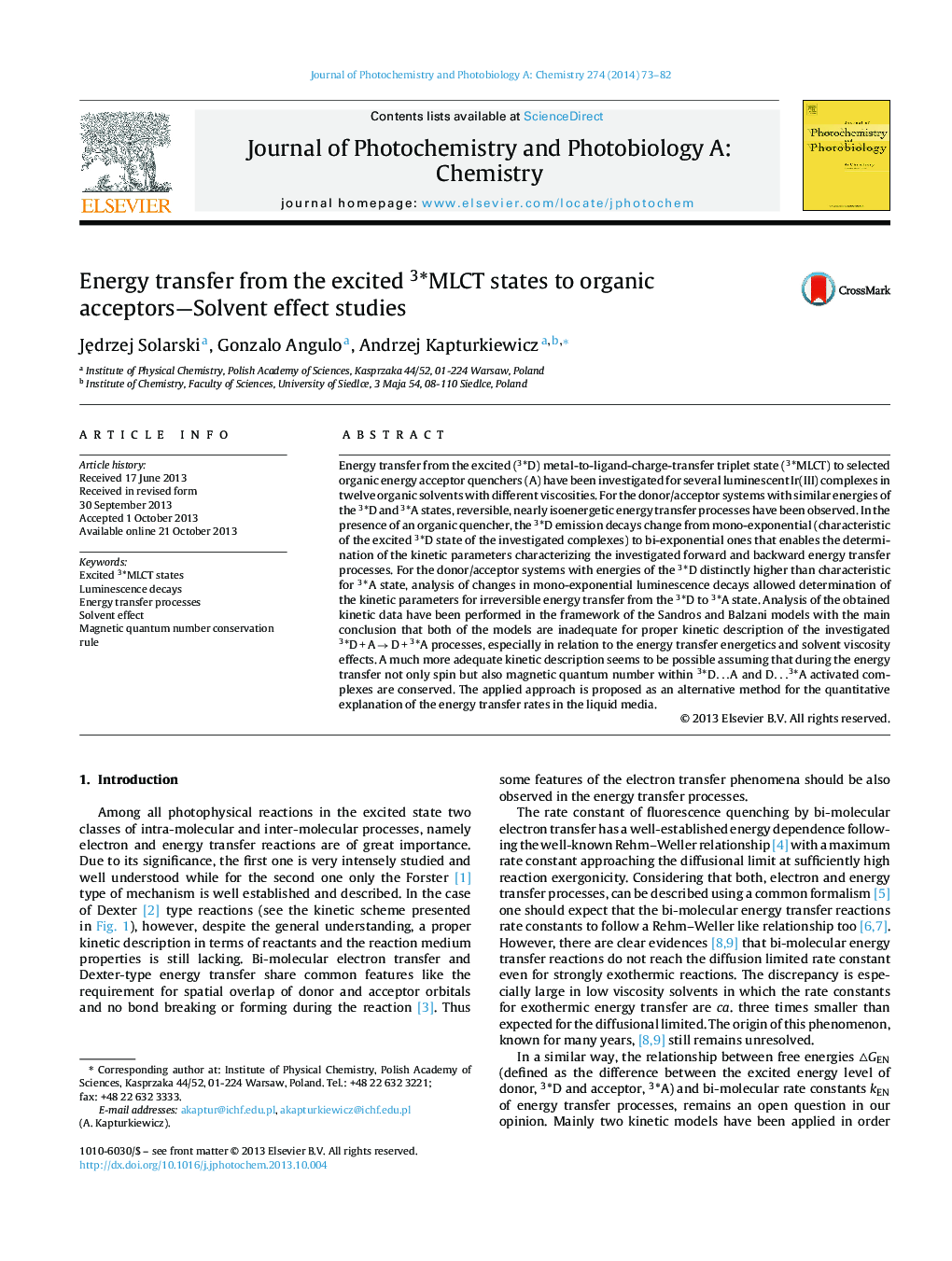| کد مقاله | کد نشریه | سال انتشار | مقاله انگلیسی | نسخه تمام متن |
|---|---|---|---|---|
| 26778 | 43976 | 2014 | 10 صفحه PDF | دانلود رایگان |

• Energy transfer from the excited 3*MLCT to aromatic hydrocarbons has been studied.
• Strongly exergonic as well as isoenergetic processes have been investigated.
• Solvent viscosity affects the energy transfer rates in the both studied cases.
• The overall energy transfer rate constants have been found to be slower than diffusion.
• Magnetic quantum number conservation rule was applied to explain the observed deviations.
Energy transfer from the excited (3*D) metal-to-ligand-charge-transfer triplet state (3*MLCT) to selected organic energy acceptor quenchers (A) have been investigated for several luminescent Ir(III) complexes in twelve organic solvents with different viscosities. For the donor/acceptor systems with similar energies of the 3*D and 3*A states, reversible, nearly isoenergetic energy transfer processes have been observed. In the presence of an organic quencher, the 3*D emission decays change from mono-exponential (characteristic of the excited 3*D state of the investigated complexes) to bi-exponential ones that enables the determination of the kinetic parameters characterizing the investigated forward and backward energy transfer processes. For the donor/acceptor systems with energies of the 3*D distinctly higher than characteristic for 3*A state, analysis of changes in mono-exponential luminescence decays allowed determination of the kinetic parameters for irreversible energy transfer from the 3*D to 3*A state. Analysis of the obtained kinetic data have been performed in the framework of the Sandros and Balzani models with the main conclusion that both of the models are inadequate for proper kinetic description of the investigated 3*D + A → D + 3*A processes, especially in relation to the energy transfer energetics and solvent viscosity effects. A much more adequate kinetic description seems to be possible assuming that during the energy transfer not only spin but also magnetic quantum number within 3*D…A and D…3*A activated complexes are conserved. The applied approach is proposed as an alternative method for the quantitative explanation of the energy transfer rates in the liquid media.
Energy transfer processes between the excited 3*MLCT of iridium(III) chelates and aromatic hydrocarbons have been studied in twelve organic solvents. It has been found that the overall energy transfer rate depends on the solvent viscosity for strongly exergonic as well as for isoenergetic processes. In both energetic regimes the experimentally found rate constants are slower than diffusion. The observation has been discussed in terms of the magnetic quantum number conservation rule.Figure optionsDownload as PowerPoint slide
Journal: Journal of Photochemistry and Photobiology A: Chemistry - Volume 274, 30 January 2014, Pages 73–82